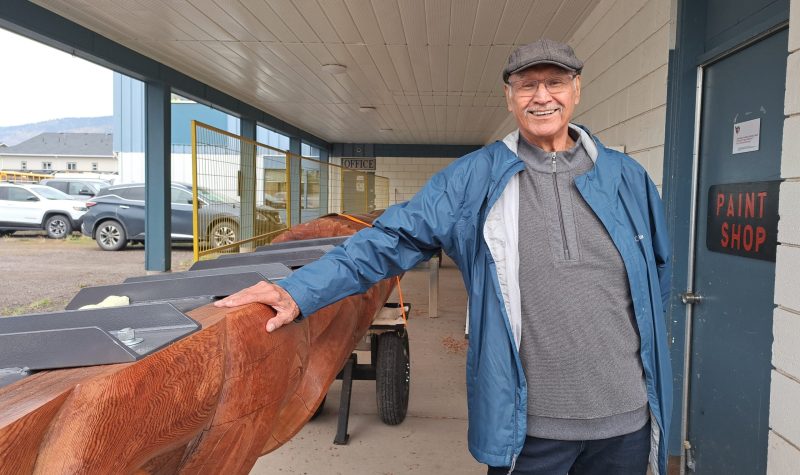On Friday, September 29th, people will gather at the Bulkley Valley Museum at the intersection of Main Street and Highway 16 in Smithers, BC to begin the journey to a totem pole raising. The pole will be raised and cemented into place in front of Walnut Park Elementary School, land which was once a vibrant and lively Wet'suwet'en community called 'Indiantown' on what is now a frontage road paralleling Highway 16.
The pole will be driven by truck to the school. Hereditary Chiefs and elders will be leading the walk and the public is welcome to follow with them. Once it is delivered to the school, a ceremony and feast will begin as the pole is being raised.
Traditionally, when totem poles are raised, ropes and pulleys are used to ratchet the pole up and remain suspended as each house represented gives a speech until the pole is fully erect in place. This pole, due to its mass and size (standing at over 15 meters in height and made of a Red Cedar tree), will be raised mechanically while the feast and speeches take place.
The history of 'Indiantown' is one of systemic racism aimed at the Wet'suwet'en people who were living on this land before European settlers began building farms, houses and businesses. An excerpt from Ben Mussett's piece in BC's Untold History describes the village: "The Wet'suwet'en people tried hard to adapt to their new reality, engaging in the new wage-based economy and attempting to homestead as the settlers did. Unfortunately, the newcomers and government often stood in their way. The B.C. government’s land policies made it very difficult for Indigenous families to pre-empt desired land — to stake claim to Crown territory for settlement or farming — while allowing settlers to pre-empt vast territory across the province. Often, Wet'suwet'en families who did somehow establish farms on non-reserve land would still be run off by incoming settlers, backed up by the strong arm of the law."
Birdy Markert is the Principal and Indigenous Educator for SD54. She worked with SD54 Board Trustee Mike McDiarmid to propose the pole to the district, town of Smithers, Office of the Wet'suwet'en, and provincial government funders. "The significance of having a totem pole on that property that once housed many Wet'suwet'en families[…] it's really interesting. I was just there a few days ago with one of our hereditary chiefs, and he remembers living there and this tree that he used to play in still stands there, right?" she told CICK. "So, it's something that I think the district and the town and the regional district have put their efforts behind. And I really feel like we are in a really good place to be acknowledging our past and wanting to move forward and forge good healthy relationships together."
The pole was designed by Hereditary Chief Dinï ze' T'sek'ot (Ron Austin) and carved by Gitxsan artist Dan Yunkws along with students under his tutelege at K'san historical village and museum, where poles are often carved.
Listen to the radio program below:


